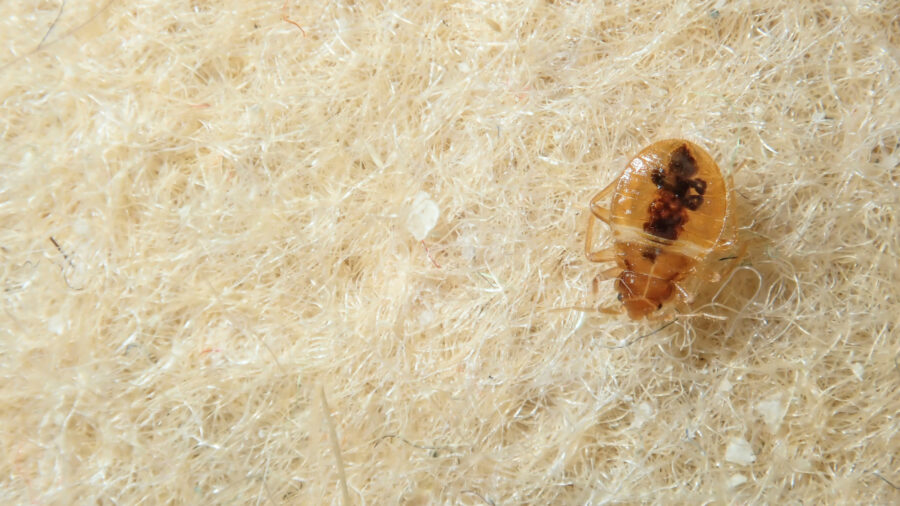Bed bugs are among the most elusive and persistent pests that can infest your home. Despite their small size, they have an impressive ability to hide and go unnoticed for long periods. This is why early detection is crucial to preventing a full-blown infestation that could lead to significant health and financial problems.
In this blog post, we’ll explore how to spot bed bugs early by identifying the most common signs and symptoms of an infestation. By knowing what to look for and acting quickly, you can protect your home from these unwanted pests.
1. Red, Itchy Bites on Your Skin
One of the most noticeable signs of a bed bug infestation is the appearance of bites on your skin. Bed bugs feed on human blood, typically during the night when you’re sleeping. Their bites usually leave small, red, itchy welts, which may appear in a line or cluster.
- What to look for: Bed bug bites are often located on areas of the body that are exposed while sleeping, such as the arms, neck, shoulders, and legs. The bites are usually itchy and can lead to swelling and redness. The reaction to a bed bug bite can vary from person to person, with some people experiencing more severe reactions, including hives or blisters.
- When to worry: If you wake up with bites that weren’t present before, and you notice them in patterns of several bites or in a linear arrangement, bed bugs may be the culprit. Keep in mind that bites alone are not definitive proof of an infestation, as other insects can also cause similar reactions. However, if you notice multiple people in your household with bites, it’s a strong indication that bed bugs are present.
2. Bed Bugs Themselves
Though bed bugs are excellent at hiding, they aren’t impossible to find. These tiny insects are reddish-brown, flat, oval-shaped, and roughly the size of an apple seed. Adult bed bugs are about 4-5 mm long, while nymphs (young bed bugs) are even smaller and translucent until they mature.
- What to look for: Bed bugs hide during the day in cracks, crevices, and other secluded spots, typically in and around your bed. Common hiding spots include the seams of mattresses, box springs, headboards, and cracks in the bed frame. They also like to hide in nearby furniture, such as couches, chairs, and nightstands.
- When to worry: If you see actual bed bugs in your bed or surrounding areas, it’s time to take immediate action. Even if you only spot one or two bugs, it’s a sign that an infestation could be developing, and you should act quickly to prevent the problem from worsening.
3. Rusty or Dark Stains on Bedding and Furniture
One of the earliest signs of a bed bug infestation is the appearance of small, dark spots on your bedding, pillows, and furniture. These stains are usually the result of bed bugs being crushed or leaving fecal matter behind.
- What to look for: You may notice reddish-brown or rusty-colored stains on sheets, pillowcases, and mattresses. These stains are caused by bed bugs’ excrement, which can leave visible marks on your bedding. If you suspect you have an infestation, carefully check your mattress seams, headboard, and furniture for these stains.
- When to worry: If you spot multiple dark stains on your bedding or furniture, it’s a red flag that bed bugs are present. These stains indicate that the bed bugs are actively feeding and excreting in the area. Even if you don’t see live bugs yet, these stains are a clear indication of their presence.
4. Eggs and Eggshells
Bed bug eggs are tiny, white, and oval-shaped, measuring around 1 mm in length. They are often difficult to spot without a magnifying glass, but they are a clear sign of an active infestation. Bed bug eggs are typically laid in hidden areas near where the bugs feed, such as cracks, seams, or the undersides of furniture.
- What to look for: Look for tiny, pearly-white eggs along the seams of your mattress, in cracks in the bed frame, or along the baseboards. You may also find bed bug eggshells, which are translucent and often discarded after the bed bugs hatch.
- When to worry: If you find eggs or eggshells, it means that bed bugs are breeding in your home. The presence of eggs is a serious warning sign, as this indicates that the infestation has likely been ongoing for some time and that the population is growing.
5. A Musty Odor in the Room
Another sign of a bed bug infestation is a musty, sweet odor that may linger in the infested area. Bed bugs release pheromones that produce a characteristic scent, which is often described as similar to the smell of coriander or moldy, musty socks.
- What to look for: If you notice a strong, unusual smell in your bedroom or living areas, this could be an indication of bed bugs. The smell is typically more noticeable in heavily infested areas and may become stronger over time.
- When to worry: A musty odor should not be ignored, especially if it’s accompanied by other signs like bites, stains, or live bed bugs. This scent is produced by the bugs’ scent glands and can be a key indicator that you’re dealing with an infestation.
6. Tiny Blood Spots on Your Bedding
After feeding, bed bugs often leave behind small blood stains on your sheets, pillowcases, or clothing. These blood spots occur when a bed bug is accidentally crushed while feeding or when a bite causes slight bleeding.
- What to look for: If you notice tiny, reddish-brown spots on your sheets or clothing, it may be from bed bugs. These stains are different from the dark, rusty stains caused by bed bug excrement, as they are redder in color due to the blood.
- When to worry: If you spot blood stains on your bedding, it’s a sign that bed bugs have been feeding and that you may have an infestation. Combine this with other signs, such as bites or the presence of bed bugs themselves, to confirm the problem.
7. How to Act If You Spot Bed Bugs
If you spot any of the signs mentioned above, it’s essential to take action immediately. The longer you wait, the more difficult it will be to eliminate the infestation. Here’s what you should do:
- Inspect the entire room: Check your bed, furniture, and surrounding areas for signs of bed bugs.
- Use heat or cold treatments: Bed bugs can be killed by exposure to extreme temperatures. Wash bedding in hot water and dry on high heat, or consider using a professional heat treatment service.
- Call a professional pest control service: Bed bugs are difficult to eradicate on your own. A pest control professional can assess the infestation and provide targeted treatments to eliminate the pests.
Conclusion
Spotting bed bugs early is key to preventing a full-scale infestation and avoiding the health, financial, and psychological consequences they can cause. By being vigilant and recognizing the early warning signs—such as bites, stains, blood spots, and the presence of bed bugs themselves—you can take action before the situation gets out of hand. If you suspect you have a bed bug problem, don’t hesitate to call a professional pest control service to help eliminate the infestation and restore peace to your home. We recommend pest control plainview.

